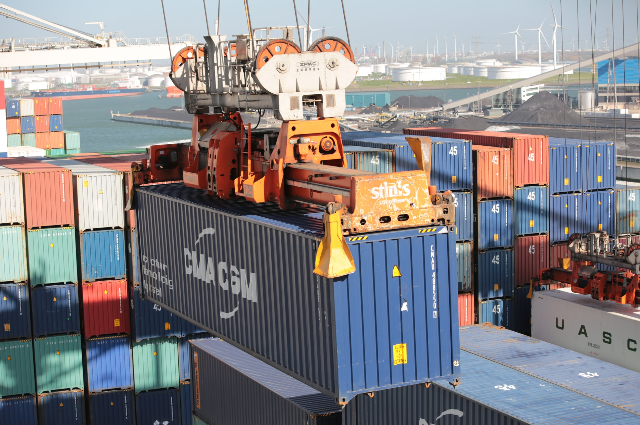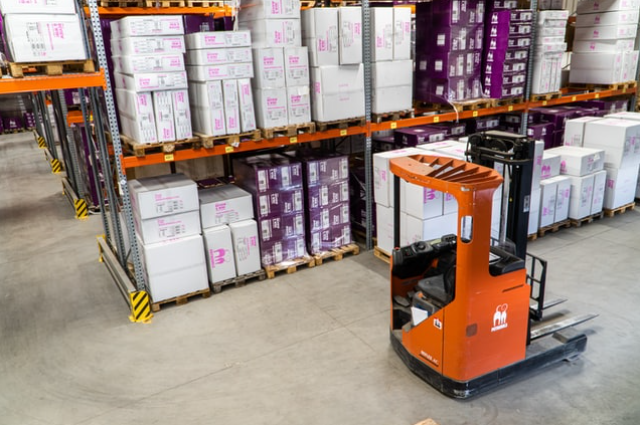
Introduction
Ever since the revolution of the supply chain in the 1990s, companies have increasingly felt the need of incorporating sustainable activities in their businesses. As a sustainable approach is acknowledged for its ability to bring in new markets and to influence the logistics sector in a great way, companies have started exploring the eco-friendly aspects of supply-chain operations. There has been a rise in environmental consciousness among the consumers too which compels big Multi National Companies (MNCs) to live up to the expectations of their customers. According to a CDP survey analysis for 2013-14, 56% of companies focusing on climate change opportunities said that their customers were becoming more receptive to low carbon products and services. Amid challenges like climate change, global warming, poverty, inequality, environmental degradation etc, the issue of sustainability in the context of Supply Chain Management (SCM) has taken center stage. At this juncture when the 2020s have been recognized as the “Decade of Action" by the United Nations to eliminate global challenges through a collective response by 2030, a revamp of the supply chain is the need of the hour.
What does Supply Chain Management (SCM) entail?
First coined by Keith Oliver in 1982, Supply Chain Management (SCM) is nothing but the efficient management of supply chain activities to attain a sustainable competitive advantage and maximize customer value. It covers activities like product design and development, sourcing, production, logistics, end-of-life product management etc.
Definition of Green and Sustainable Supply Chain
Green Supply Chain Management (GSCM) focuses on instilling an ecological spirit in supply chain operations. Deviating from traditional activities, it aims to adopt eco-friendly activities that serve to mitigate the environmental impact of not just the supply chain but the whole organisation. GSCM focuses on reducing carbon footprint and waste generation, reusing raw materials, lowering green house gas emissions besides other environmental goals.
Sustainable Supply Chain (SSCM) is a broader concept and encapsulates the environmental, social and economic aspects of supply chain operations by focusing largely upon profits, people engagement and impact on the planet. SSCM deals with the entire manufacturing process be it processing raw materials, reusing or disposing products or issues pertaining to labour rights and practices or corporate social responsibility.

Distinction between Green Supply Chain Management (GSCM) and Sustainable
Supply Chain Management (SSCM) While the two terms seem to be along similar lines, they are far more different with many overlapping elements. Put simply, going green only considers the environmental aspects whereas being sustainable implies considering the social, economical and environmental impacts of a product or organisation. The approach of GCSM is to take care of operations such as manufacturing, packaging, recycling, quality management etc. On the other hand, the approach of SSCM is to carry out the economic activities within environmental and social thresholds. Put crisply by Allen White, the co-founder of Global Initiative for Sustainability Ratings, “Sustainability requires contextualization within thresholds.” In order to determine whether a supply chain is sustainable enough, various external environmental and societal references points need to be considered.
In essence, companies that incorporate the principles of GSCM in their supply chain operations improve their sustainability performance. SSCM is the largest cascade of which GSCM forms a part. They both are intertwined and complementary to each other as they facilitate an environment-friendly business. As per the United Nations, a sustainable supply chain is the judicious management of environmental, social, and economic impacts via good governance practices throughout the life cycles of goods and services.
Importance of Green and Sustainable Supply Chain
For years, many companies especially those in the consumer product sector were negligent towards the adverse social and environmental impacts of their supply chain operations because profitability outweighed sustainability. It is irrefutable that adopting GSCM could be costly in the beginning but it is profitable for the companies in the long run. With the passage of time and rising environmental conciousness, many companies have started greening their processes for a sustainable supply chain leading to:
1. Increased profitability: Adopting a sustainable supply chain brings enormous benefits like high economic returns, better use of raw materials, low operational costs, safe working environment, better quality management etc. Eventually, all these benefits leads to a higher valuation of a business. Many Multi-national Corporates (MNCs) are striving on the forefront to earn huge profits by coming up with innovative and holistic sustainable strategies. When big companies adhere to a uniform international standard of sustainability, it promotes healthy competition and leads to a win-win situation for the companies as well as the environment.
2. A positive brand image: Adopting a sustainable supply chain is more consumer-friendly as it is increasingly becoming more acceptable in the present socio-economic scenario. Big brands establish a connection with their consumers. No consumer would like to buy a product that is unsustainable for the environment given the rising consensus of environmental protectionism. So, one of the effective ways to earn a good repute and construct a positive brand image is to adopt sustainable practices through green initiatives that can help win the trust and loyalty of the consumers.
3. Corporate Social Responsibility: In any business, it is very important to win the trust of all the stakeholders. By incorporating sustainable supply chain, a wide range of issues like fair labour practices, labour rights, human rights, anti-corruption practices are also addressed. It gives an ethical boost to the working of the company by ensuring efficiency and transparency.
4. Corporate Innovation: A sustainable supply chain leads to a working environment that is more conducive to innovation. It imbibes a sense of responsibility by injecting new visions and values within the business. It brings an overall positive outlook where the employees are more willing to collaborate to attain common goals. They tend to work more actively to develop more sustainable products and services.
Challenges surrounding Green and Sustainable Supply Chain
MNCs are increasingly opting to work with suppliers who adhere to social and environmental standards. They expect good compliance to those standards from their first-tier suppliers. The motive behind it is to build a sustainable supply network. However, when it comes to execution on ground, there are many hardships before the companies. Many suppliers are complacent to follow the standards and go on to violate them bringing bad repute to the companies. Not long ago, companies like Apple, Dell and HP had to face an embarrassing backlash for sourcing electronics from overseas companies in which employees were pushed to work in hazardous conditions. Nike and Adidas dealt with similar blows for relying on suppliers that were dumping toxins into rivers in China.
The first tier-suppliers are not equipped with environmental management systems and lack proper expertise and resources to deal with social problems like workplace security, sexual harassment, labour rights, chronic overtime issues, etc. The problem lies with MNCs too because in order to maximize their profits, they place orders that are beyond the supplier’s capacity. To make matters worse, they set unrealistic deadlines by demanding overtime from the workers compelling them to resort to unethical practices. The absence of a direct contractual relationship between the MNCs and lower-tier suppliers poses big challenges and makes it difficult to govern the sustainability standards. Often these suppliers are residents of countries where the sustainability standards are hardly governed and enforced by any law. Due to absence of such regulations, the idea of sustainability seems incomprehensible to them.
Solutions and way forward
MNCs should strive to set long-term sustainability goals and create an effective roadmap to attain those goals. They should take the initiative of encouraging their lower-tier suppliers to set their own sustainability goals and include them in their sustainability strategy to give it a fillip.
Further, they can entrust a staff with the task of monitoring and supervising the programs and initiatives aimed at attaining sustainability. MNCs can also collaborate among themselves to create a strong and inclusive supply chain network wherein they can share their sustainability practices and promote mutual cooperation and growth. Since major corporations use many of the same suppliers, a collaboration among themselves is a feasible option. Conducting summits on sustainable supply chain, conferring sustainability awards and recognitions, entering into long-term contracts, imparting industry wide training can serve as viable solutions.
Conclusion
Raging issues like climate change, environmental degradation, sustainability have come to the limelight in the recent years and global supply chain has got a huge role in addressing these issues. As per the recent Oxford Economics study, 65% of companies have created a clear purpose statement around sustainability and 23% said they are in the process of doing so.
However, there is a long way to go. Companies should strive to create their own sustainable supply chains by also collaborating with others. A single business entity cannot fight against all odds alone. Global participation is the only feasible way to attain the Sustainable Development Goals (SDGs) set by the UN.
Reference:
